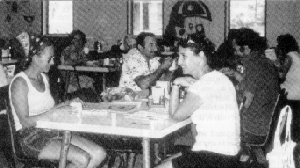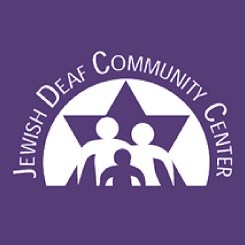
You may know someone who lives on a “kibbutz” in Israel, or perhaps you may have visited a kibbutz? Have you wondered how the idea of the kibbutz came about and what a kibbutz is exactly?
kib-butz n (plural kibbutzim) communal farm or settlement in Israel
Before Palestine became Israel and more people moved in, it was a desert: very hot with little water. It was difficult to grow anything, so food was in short supply. As history of Jewish people over the last several thousand years show, the many battles of Jerusalem and the dry desert made it very difficult to live in their ideal home – ‘the blessed land’. More Jewish people started living in other parts of the world.
Around World War 11 and Israel’s independence, however, Jewish people started arriving in ‘the blessed lend’ with dreams of nurturing it into a strong country with pride in its history. Some settlers were idealists; others had avoided or survived the horrific conditions of World War 11 and Nazism. These people came up with the idea of working together in small, divided groups with each group living on certain pieces of land to make their land usable.
Leadership In Agriculture
These groups of people would help each other and share everything with each other. As they made the land more usable by introducing methods of irrigation in order to grow food, they were able to sell some of the food and any money they earned would be shared by all members of the group. Kibbutzim has been traditionally the backbone of Israel’s agriculture. Today, it produces 33% of the country’s farm output.
Today, about 2.3 percent of the Israeli population lives on on kibbutzim.
The Kibbutz World
In surfing the Internet, JDCC News staff writers reamed that “The kibbutz is a self-contained social and economic unit in which decisions are taken by the general assembly of its members, and property and means of production are commonly owned.
“Kibbutz is a place and an idea and a series of ideas”, one website fervently states, “It is not an ideal society, but a society of ideals. Kibbutz is 270 communities, home for over 115,000 Jews who have voluntarily chosen a communal way of life and who are free to leave whenever they like.”
Each kibbutz has a different focus for its economic needs, depending on its location. While agriculture and fisheries is most common, others have focused on quarries, transportation, building and construction. Today’s kibbutz is the achievement of four generations.
Keeping Up With The Times
Naturally as time goes by, things change in the world especially when land has become cultivatable and farm products has become plentiful, production output has changed. Services to the industry, tourism and services are now provided by some kibbutzim. “In the beginning, kibbutzim were based strictly on agriculture, but today light industry is common on nearly every kibbutz.”
Researching several specific kibbutz was fascinating. Belt Hashita, one of the larger ones, was established in 1947 by immigrants from Rumania. The kibbutz boomed when Polish Holocaust survivors joined them. In 1950. During their early years, “the fields were virgin and the methods were simple, and most kibbutz labor was put into highly work intensive vegetable field and cereal crops”. Success soon came after they planted olives and in the mid-1950’s, also introduced cotton. “In those times, the entire community depended on success in the fields, and children and adults worked together to reach this goals.
Where Kibbutz Members Work
- Agriculture & Fisheries 24%
- Industry & Quarries 24%
- Tourism, Commerce & Finance 11%
- Transportation & Communication 5%
- Building & Utilities 1%
- Public & Community Services 18%
- Personal Services 17%
“Along with a revolution in agriculture had to come a revolution in technology, especially when taking into account the tough farming conditions existing in Israel. Technology attacked the challenges of cultivation, dry-land irrigation and harvest, and tested man’s ability to grow fruit and crops where none had grown before. Israel has continually met its agricultural challenges and Belt Hashita has continually been among the leaders of the field, helping to breed new high-yield cotton strains, developing new agricultural equipment [they now manufacture and sell equipment], and trying new systems in order to improve the old.”
They say that when agricultural exports to Europe took off in the late 1960’s, they found its niche growing Israeli early-ripening sweet melon… in the 1970’s, they grew silverskin onions and currently produce over 5,000 tons of onions each year. They grow agriculture products on 2,300 acres of land which also includes wheat, oats, safflower, sunflower seeds, tomatoes, beans, chickpeas and watermelons, yellow and pink grapefruits, mineola and pomelit. They also export to the United States. And believe it or not, they also have a modern nursery growing ornamental trees and shrubs for municipalities and landscapers, and raise over 2,000 head of beef cattle and have a modern automated dairy with 450 head of milk producing cows usually milked by high school kids!
Another place is Kibbutz Kfar Szold which celebrates its 55th anniversary. Originally formed eight years earlier by a group of young people from Germany and Hungary, it was named after Henrietta Szold, one of the founders who helped bring thousands of displaced youngsters to Israel, educated them and helped them to integrate into Israeli society. After the first several years of preparing the soil for agricultural crops by removing black basalt rocks strewn all over the place, their main products are apples, citrus fruit, avocado, corn and watermelon. They also breed poultry, cattle and sheep.
As most of the kibbutz’s residents had rich cultural traditions, they frequently expressed their culture through music and theatrical performances. Their population is currently 370 adults and 150 children. A fascinating piece of history: the kibbutz was attacked by the Syrian army during the War of Independence. All children were evacuated and sent to another kibbutz for several months.
Kibbutz Gadot, located above the biblical ‘Daughters of Jacob’ bridge over the Jordan on the way to the Golan, is known for its plastic factory manufacturing all kinds of plastic containers, bins, boxes, trays for storage, transportation and agriculture as well as children furniture and toys.
Kibbutz Gvulot was established on May 12th 1943 as one of three agricultural outposts in the Negev and currently has 112 permanent members, 110 children and 100 temporary residents. Their main crops are potatoes, peanuts, carrots, citrus orchards, dairy, chicken and amaryllis flower bulbs. They also have a factory that prepares compounds on epoxy, polyurethane and RTV silicon bases.
Kibbutz Yotata raises livestock and crops mostly mangos and dates, sells milk and some produce to restaurants and markets. One temporary resident from outside Israel who stayed at Kibbutz Yotata explains that his job was to pick dates. As is the norm, the workers wake up very early in the morning and the work day ends at noon where they have lunch which is the biggest meal of the day in Israel. Typical fare he reported eating: schnitzel, humus and pita, and potato lathes. After finishing lunch and having completed the work day, the rest of the day is spent for family time and relaxation.
Other areas that kibbutzim work in also cover fashion clothing, metal work, plastics, processed foods, computer data compilation, joint purchasing and marketing, centers for tourism, with recreational facilities such as guest houses, swimming pools, horseback riding, tennis courts, museums, exotic animal farms and water parks.
As Israel’s population grew and urban centers expanded, some kibbutzim found themselves becoming suburbs of new cities so they even run commercial laundries, catering, factory outlet stores and child care, including summer camps.
How It Works
“The economy of the kibbutz is organized collectively. Kibbutz members work in both productive and service branches. All income goes into the communes general fund and is distributed equally to members.
“The kibbutz today has a relatively high standard of living. Although meals are still served in a communal dining hall and members live in small two and three room apartments [cabins], the kibbutz is a total community which provides for the needs of members from birth through old age. It provides complete education through high school and many members are sent to university”.
Although provisions by each kibbutz varies, in general, each provides housing, food, clothing and laundry, recreational facilities including entertainment, vehicles for transportation, and education. You’d be surprised what some kibbutz provides nowadays… cable TV, swimming pools and direct-dial telephone service, to name a few!
“Medical care is, of course, complete and the kibbutzim budget a part of their resources toward vacation and travel for its members…”
One organization describes kibbutzim as “a large household shared by an entire community. The kibbutz is not a village as no public roads go through it and, legally, it is non-profit. The kibbutz community builds its own life-pattern around shared social, cultural and economic activities.
“Economic operations are communally owned and run, making the kibbutz the most complete example of worker ownership and management… Teamwork is stressed in an atmosphere of informality with minimal emphasis on status differences in role behavior…”
One organization representative explains that “Most kibbutzim are laid out according to a similar plan”, the representative, continues, “The residential area encompasses carefully-tended members’ homes and gardens, children’s houses and playgrounds for every age group, and communal facilities such as a dining hall, auditorium, library, swimming pool, tennis court, medical clinic, laundry, grocery and the like. Adjacent to the living quarters are sheds for dairy cattle and modern chicken coops, as well as one or more industrial plants. Agriculture fields, and fish ponds are located around the perimeter, a short tractor ride from the center.
“The kibbutz functions as a direct democracy. The general assembly of all its members formulates policy, elects officers, authorizes the kibbutz budget and approves new members. It serves not only as a decision-making body but also as a forum where members may express their opinions and views.
For A Vacation To Visit?
It is traditional in many Jewish communities around the world including the United States for Jewish people to “make aliyah” to Israel… go to Israel to stay on a kibbutz after graduating from high school and before entering college, or even after college and before starting a job in the outside world. Many young people around the world go to stay on a kibbutz. One source explains that the peak time is during summer when “young people head to Israel’s kibbutzim on missions of adventure, travel and personal fulfillment”.
JDCC News was unable to locate any Deaf members of any kibbutz by the time this issue went to press. If you know of anyone, we would like to hear from you!
And a proud declaration we found on one website: “After 70 years, the kibbutz remains one of the most successful societal experiments of the 20th century. Come and see it for yourself!!!!”




